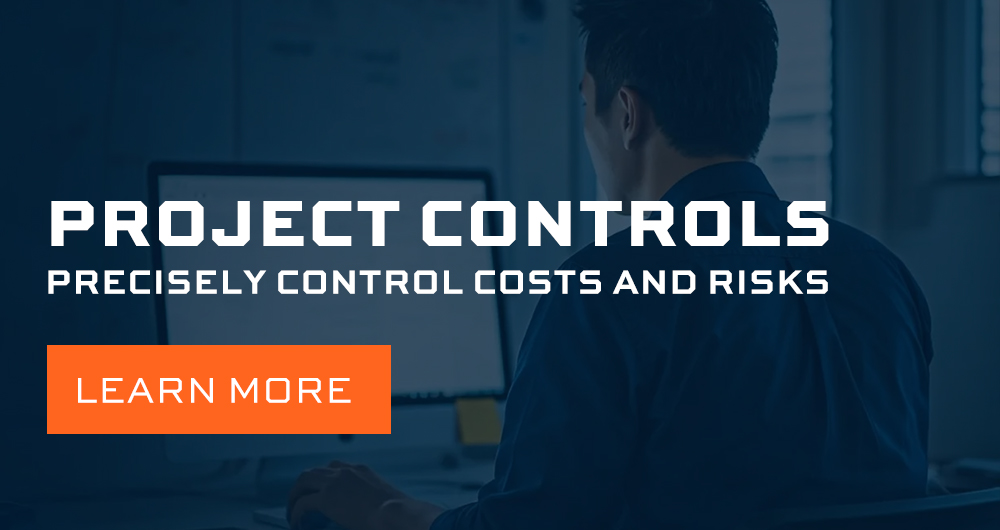Advanced work packaging (AWP) is gaining in adoption as a highly effective construction project planning process. If you’re one of the many contractors who’s been using AWP to plan your capital projects, you know how much more smoothly everything runs when work is broken down into smaller units of work. Basing these units on the types of resources needed — people, equipment, materials and information — also helps to more tightly control costs and schedules.
This level of efficiency is one of the reasons AWP has become more popular. Another reason could be how volatile and unexpected certain risk factors have been in recent years at the macro level, which have threatened on-time, on-budget outcomes.
If you’ve been using AWP for a few years, you may be looking for ways to improve how the process works for you. So how can you kick it up a notch? Here are four ways to make it even more powerful.
# 1 Tap into your historical project data for past risks
Having used AWP for a while, you’re familiar with identifying and removing or controlling risks early in the process so you can create a smoother Path of Construction (PoC). And you may have seen declines in their occurrence across projects. But what if you want to further improve upon that trend? Or, what if you’re noticing certain risks surfacing that should’ve been identified at the beginning? This is where you can turn to historical data.
You can see where things went wrong and where in the process problems are likely to occur for current and future projects. But it also shows what worked well. All of which can help inform future decisions about how work should be packaged up.
Knowing what risks have occurred is one thing, but digging deeper into their timing, frequency and severity will yield the insights you need. You’ll find these details reflected in the earned value management (EVM) metrics — cost and schedule variances and performance indexes — that are highly responsive to risks in real time. The trends, patterns and even high/low anomalies of these metrics can help you gauge whether and how to account for similar risks throughout the AWP process, especially as the installation work packages (IWP) are being created.
Consider the different “what if” scenarios that could play out. What can be prevented altogether? For those that may be unavoidable, what contingencies should be put into place? How would each impact PoC development?
#2 Gauge the effectiveness of AWP by tracking cost and schedule performance
Do you know how effectively the AWP process is working for you? This is where EVM’s value goes beyond providing historical context and insights.
Once past project data has been mined to inform development of a more fine-tuned PoC, EVM can also be used to optimize AWP’s efficiency, helping you stay on top of what’s happening behind the scenes. Its two most popular metrics, cost performance (CPI) and schedule performance (SPI), are reliable indicators of how well AWP is doing in real time. These ebb and flow in real time as various risk factors surface.
If the PoC has been properly developed, these metrics should stay rather stable without venturing outside its established operating range. It can be taken as a sign that this intelligence-based practice is working: Delay-causing threats have been sufficiently removed or mitigated. Resources have been properly procured and allocated for each IWP. Most change orders have essentially been nullified with tight, well-thought-out planning at the beginning, which can reduce potential rework.
#3 Continue identifying risks and developing forecasts
With its hyper-focused work packaging, tight scheduling and upfront risk identification, many might consider AWP to be the most comprehensive way to organize a risk-adjusted project plan.
But, like most capital projects themselves, risk is inherently dynamic. Risk identification and management are just as much ongoing processes as AWP, meant to evolve over time. Same goes for the PoC. Even with the planning that goes into it, this document is meant to be fluid rather than rigid.
As with any plan, things must continually be evaluated and adjusted. When new or updated information or unexpected risks arise, keep asking the what ifs and forecasting their potential impact on the plan. Once this is determined, the three main teams — engineering, procurement and construction — can collectively decide how to best adjust the schedule and modify the PoC accordingly.
#4 Keep asking questions
For as fine-tuned as work packages are, they aren’t one-and-done. They’re meant to be works in progress. Continually examine the overall process, going beyond the “what ifs.” Some questions to consider:
- Are performance metrics showing that the IWPs are doing what they’re meant to do, controlling costs and schedules?
- Are the IWPs as clear as they need to be for everyone at the jobsite to understand them?
- Prior to the beginning of each package, are the jobsite areas being adequately evaluated for potential safety hazards or issues that could introduce new risks that threaten delays?
- Is anything happening internally or externally that may require adjustment to the PoC or any group of IWPs?
For these suggestions to deliver the most benefit — and to further extend AWP’s inherent efficiency — go digital. Common computer programs, while popular among construction companies, can only get you so far. They don’t offer the range of functionality necessary for AWP to optimize the field execution and project outcomes you’re aiming for. Instead, consider upgrading to construction-specific software that supports work planning and packaging. We’re happy to chat with you about how this software helps you — just set up a consultation.




